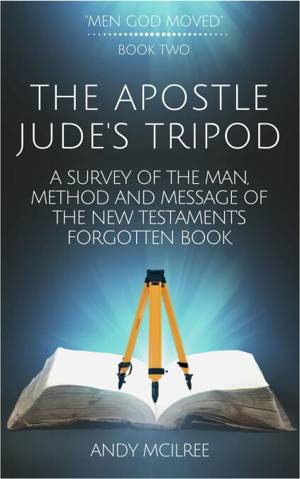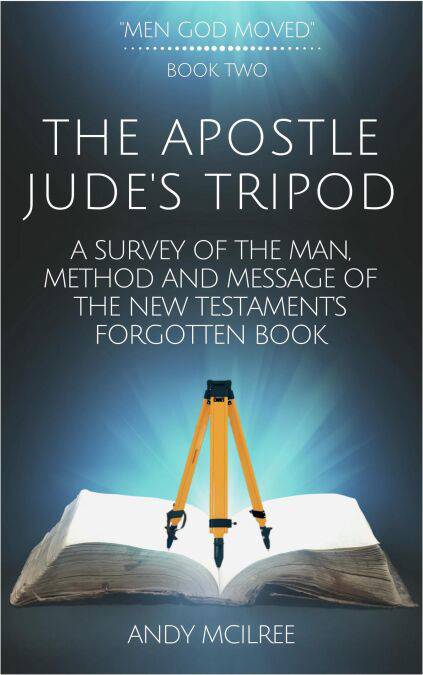
- Retrait gratuit dans votre magasin Club
- 7.000.000 titres dans notre catalogue
- Payer en toute sécurité
- Toujours un magasin près de chez vous
- Retrait gratuit dans votre magasin Club
- 7.000.000 titres dans notre catalogue
- Payer en toute sécurité
- Toujours un magasin près de chez vous
The Apostle Jude's Tripod: A Survey of the Man, Method and Message of the New Testament's Forgotten Book EBOOK
Men God Moved, #2
Andy McIlreeDescription
The apostle Jude's little letter can easily be read within five minutes, yet it spans eternity past and future, history and prophecy, blessing and judgment, past revelation and fresh revelation, things known and not known, heaven's glory and hell's grief. And, like all Scripture, it has a God-given relevance for us in the present day:
* for reproof – showing when we are off track
* for correction – helping us to get back on track
* for instruction – enabling us to keep on track.
As Jude wrote his little book, it's as if he did so with the mindset of a surveyor, scanning the worrying spiritual landscape in front of him - 19 times in his short letter, Jude moves his surveyor's 'tripod' of threes to drive his point home. In addition to exploring each of these, Bible teacher Andy McIlree unpacks each verse across seven key themes of Salutation, Salvation, Contention, Condemnation, Revelation, Benediction and Doxology.
This is a very enlightening and practical study of a little understood, under-appreciated and often forgotten part of our New Testament.
"There is inescapable evidence, and no room for doubt, that a great work of God was done in the hearts of Mary and Joseph's four sons – James, Joses, Simon, and Judas – during the forty days between Calvary and being included in the one hundred and twenty who gathered in Acts 1:14-15 to wait for the coming of the Holy Spirit. How and when the change took place, we don't know, but change they most certainly did. Perhaps, somewhere in the darkness of Calvary's cross, they felt their own darkness; perhaps, during the earthquake, they also were shaken; and perhaps, when the tombs were opened, they began to sense their own spiritual awakening. What we do know is that the Lord Jesus Christ was seen after His resurrection "by Cephas, then by the twelve. After that He was seen by over five hundred brethren at once" and "After that He was seen by James, then by all the apostles." The exalted Christ had come into their lives in a wonderful fulfilment of the ark's covenant blessing.
There was no familiarity in his opening remark. He could easily have said, "Jude, a brother of Jesus Christ and bondservant with James," but, like James in his letter, he owned the Lordship of the One they formerly spoke against and their transformation as servants of the King. James called Him "our Lord Jesus Christ, the Lord of glory"21 – or, more accurately by removing the words in italics, "our Lord Jesus Christ of the glory." By saying this, James was not only convinced of the glory of the place from which his Saviour had come, and to which He had returned, he was thinking of the glory of the Person and of how that glory should radiate through "the faith" that we hold. It was this that Jude made his aim by describing his servanthood with the Greek word doulos … the Spirit of God attached the word doulos to Jude to speak of one who is tied to the task like a slave and not loosed without his master's permission."
Spécifications
Parties prenantes
- Auteur(s) :
- Editeur:
Contenu
- Langue:
- Anglais
- Collection :
Caractéristiques
- EAN:
- 9781393248224
- Date de parution :
- 18-01-21
- Format:
- Ebook
- Protection digitale:
- /
- Format numérique:
- ePub







